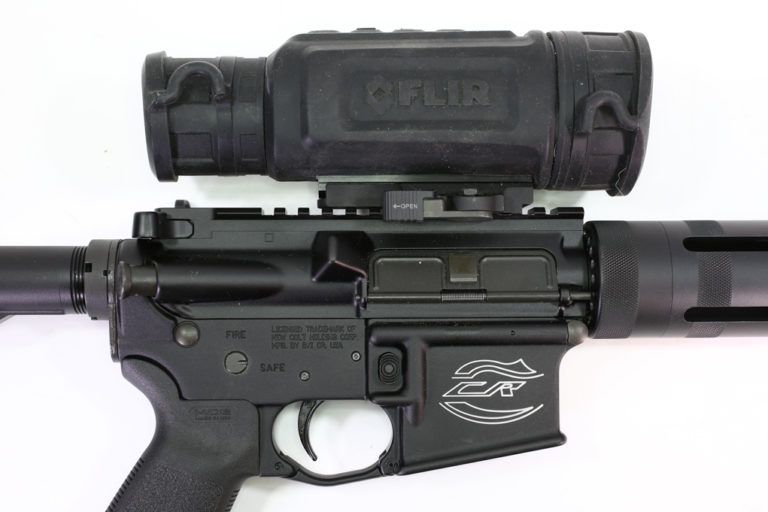
By equipping your custom AR-15 .300 Blackout with night vision, you can shop for all the pork you could possibly want.
What you need in a hog-hunting AR-15:
- Hogs are tough characters. Use the largest caliber AR you can still shoot quickly.
- Nighttime is hog time, and night vision optics are more accessible and affordable than ever.
- If pork is on your grocery list, consider a weapons light and suppressor for your custom AR-15.
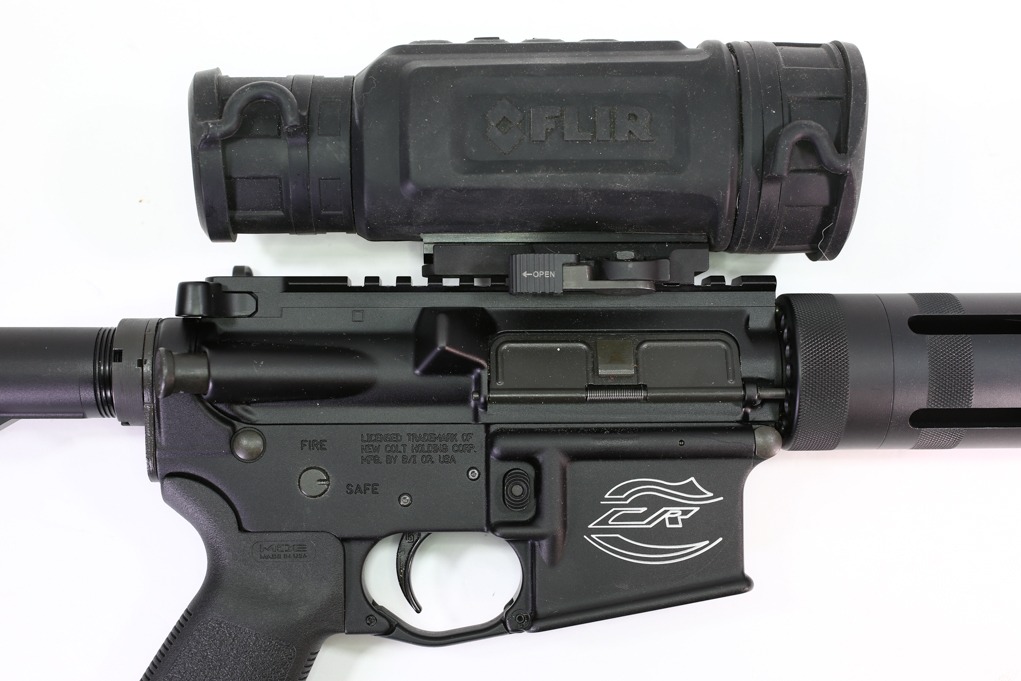
The world is being over-run. On the seas, the water is filling with jellyfish. On land, hogs. Or so it seems, at times. Hogs are productive (at least when it comes to making more hogs), adaptable and smart. They are also quite destructive, at least from the perspective of farmers and ranchers.
A squadron of hogs can pretty much reduce a plot of crops to a muddy mess in the course of a weekend. Shooting them is not considered hunting in most locales, especially the ones that suffer from their presence. No, it is pest eradication.
The process is not sniping or whacking a single hog, the big, trophy hog. No, the idea is to get as many of them as possible at each opportunity.

Complicating this is the cleverness of the hogs. They are smart enough to know what is going on, and ornery enough to not like it. If you hunt hogs, they will adapt. Quickly. Ambush a new fleet of them on a nice sunny day, and they will move to dawn and dusk. Go after them then, and they will hole up in the light hours and come out only at night. This doesn’t take long if the ones you are hunting having been briefed by others, and they are already starting at night.
So, you’ll be using specialty optics. Before we get to that, there is the matter of caliber.
I’ve been told that the .223/5.56 is marginal, that the .300 Blackout is enough or marginal, and that everything up to a tactical nuke is “marginal.”
Yes, they are tough, but they are not all the size of Buicks. You can use whatever you want, like, have or are recommended. My suggestion on caliber is this: consider the biggest one with the stoutest load that you can shoot quickly and accurately. A .300 blackout that you can hit with at the rate of 3-4 shots per second is probably better than a .458 Socom that you can hit with at the rate of 3-4 shots in ten seconds.
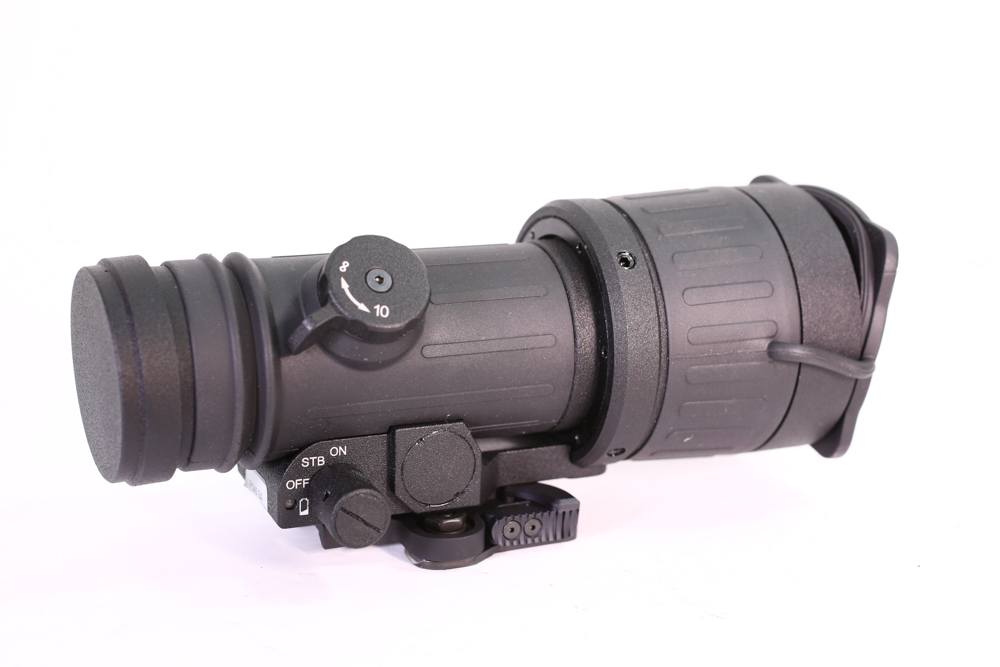
Use the biggest caliber that you can hit fast with.
Then scope it up.
Since the hogs will be out at night, you will want to use night vision gear. Also known by the acronym NVG, or NODs, these are photomultipliers that let you see in dim light. Starlight, in fact. Even a hint of moon helps, but it helps the hogs, too. Overcast makes NVG useless, as it hasn’t anything to magnify.
NVG
Night vision comes in two types, add-ons and weaponsights. The add-ons are just night vision multipliers. They take in the ambient light, crank it up thousands of times, and pump it out as a video picture in a small TV screen on the back of the unit.
This is the ubiquitous “green screen” image we see in movies and TV shows. The image is not nearly as hi-res as your smartphone, in part because the expense of making it such would be hideous, and in part because the volume of production can’t support that cost.
Each pixel you see in the image on your NVG is a “pipe” of the multiplier. If you wanted to double the resolution, you would have to double the number of microscopic pipes that are used by the photomultiplier to produce that image.
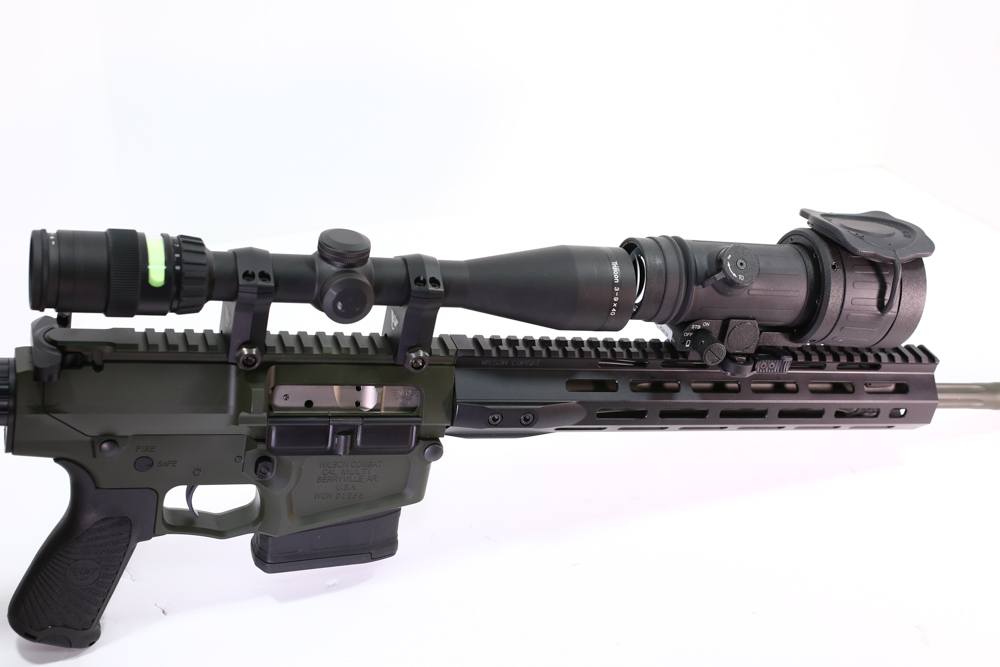
You mount the NVG on your rifle with your regular aiming optic already mounted behind it. You look through your scope, at the image of the NVG, and as long as your scope was properly zeroed, you get hits.
The big advantage here is that you can install the scope, zero it, and know it is on. Then put the NVG on when you need it, and take it off when you don’t, and not change your zero.
The disadvantage is that you have two scopes, with their combined weight, on the rifle at night. When night shooting was sniping and single shots, this wasn’t a problem. When trying to whack a whole herd of hogs before they can flee, extra weight is a problem.
The setup is exemplified by my ATN NVG. This is a day/night system, where you mount it for night and take it off for the day. This is not to be confused with a Day-Night scope, which can be used at both times of day. Behind it, use the scope of your choice. I generally don’t use anything with more magnification than 10X. The reason is simple: you are not magnifying 10X on the NVG as you would be in the day.
The daytime “resolution” of the world is beyond the parameters of the 2K, 4K, 8K digital methodology. When you zoom up in your scope, you see 10X closer of an object that can be viewed microscopically if you had the gear.
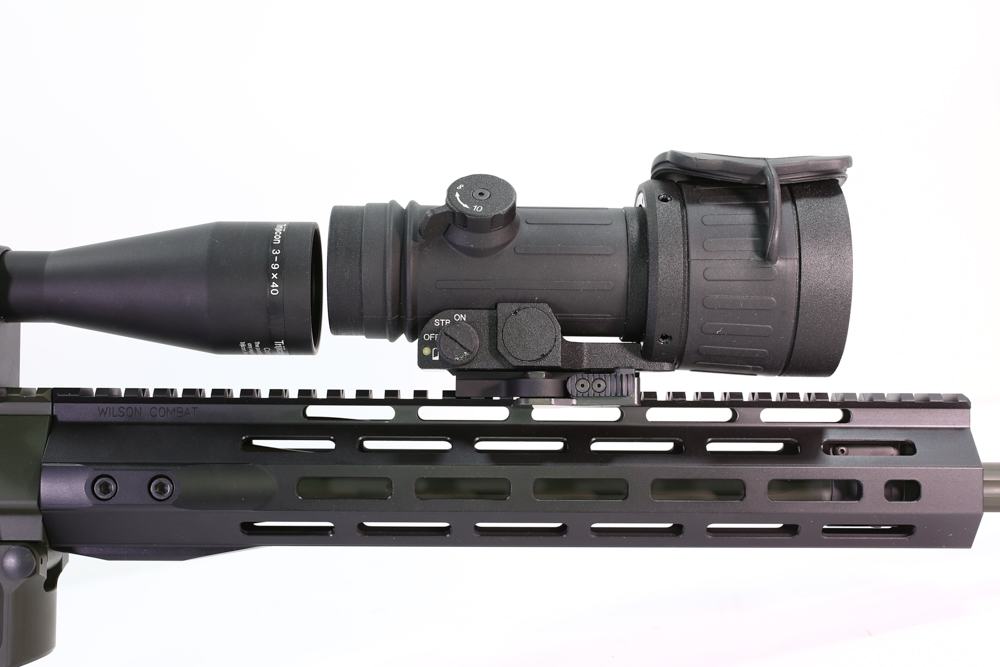
When you zoom up to 10X on an NVG display, you are zooming up on a screen that is 640×480 in resolution. If you go X enough, you simply see pixels you can’t turn into an image.
So, use as much as you want, but realize that you run into the law of diminishing returns really quickly.
Weaponmount
Here, the NVG device has an aiming reticle built in. The advantage is simple: you only have the one device to deal with, and no extra weight. (Assuming your weapon mount NVG is no heavier than the plain NVG.) The disadvantages are many, even if each is minor.
You are stuck with the reticle it came with, or the reticle choices you could order it in. If you don’t like what they offer, too bad. It only works at night. Oh, makers offer a front cap with a pinhole in it, for “use in the daylight,” but this is a pretty marginal compromise. And if the cap comes off in the daytime when you have the NVG turned on, you risk burning it out in short order. If you are only ever going to use it for night-time hog shooting, no problem. But if it is your one-and-only AR, problem.
There will be little, if any, magnification. You have what amounts to a night vision equivalent of a red-dot scope.
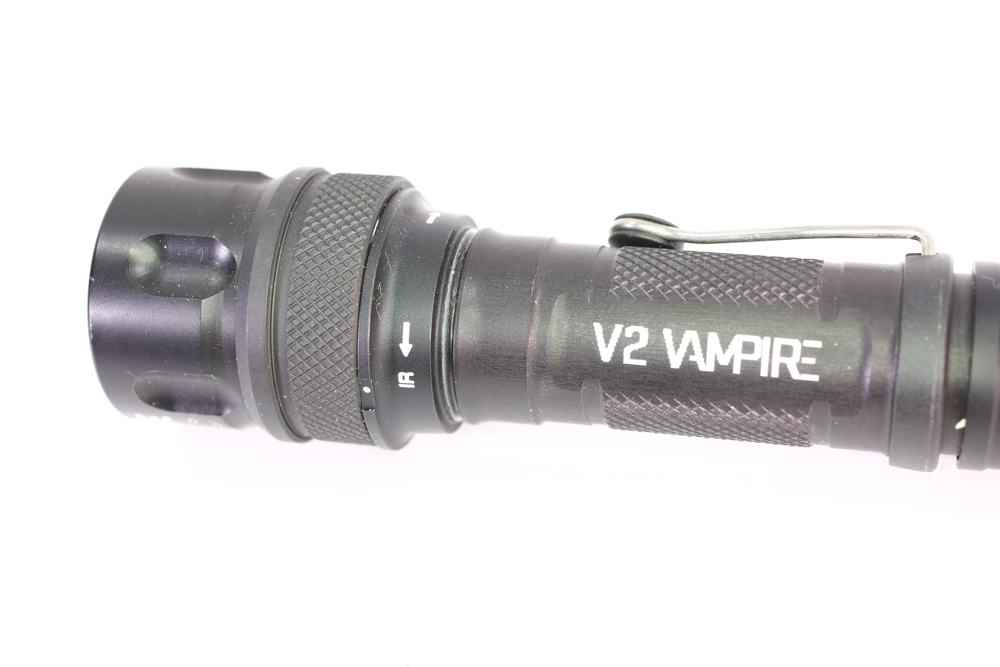
Generations
The technology used to produce an intensified image is rated by what “generation” it hails from. Basically, the lower the gen, the older the tech and the lower the results. The generations are 1, 2 and 3. There are other descriptors used by manufacturers, and there are some who are using a “Gen 4” description, but that isn’t an official government generation.
Basically, the newer the technology the more a unit costs, even if the housing and all the details are the same. In one instance, going from a Gen 2+ (some enhancements over a Gen 2, but not an official designation) up to a Gen 4 (again, not official) brings the cost from $1,700 up to $6,000.
There is also the matter of quality. The multipliers are made by bundling the microfibers together, processing them to create the core of the system, and then measuring them for performance. A core with a “dead” or inoperative tube will have a black spot in the image.
The manufacturing process is still art as much as science. The government has a standing order for the top-quality cores. If there are any left over after the government nabs all the ones they want/need, then the top-quality ones come down to use. Otherwise, we get the ones with the occasional black dot in the image.
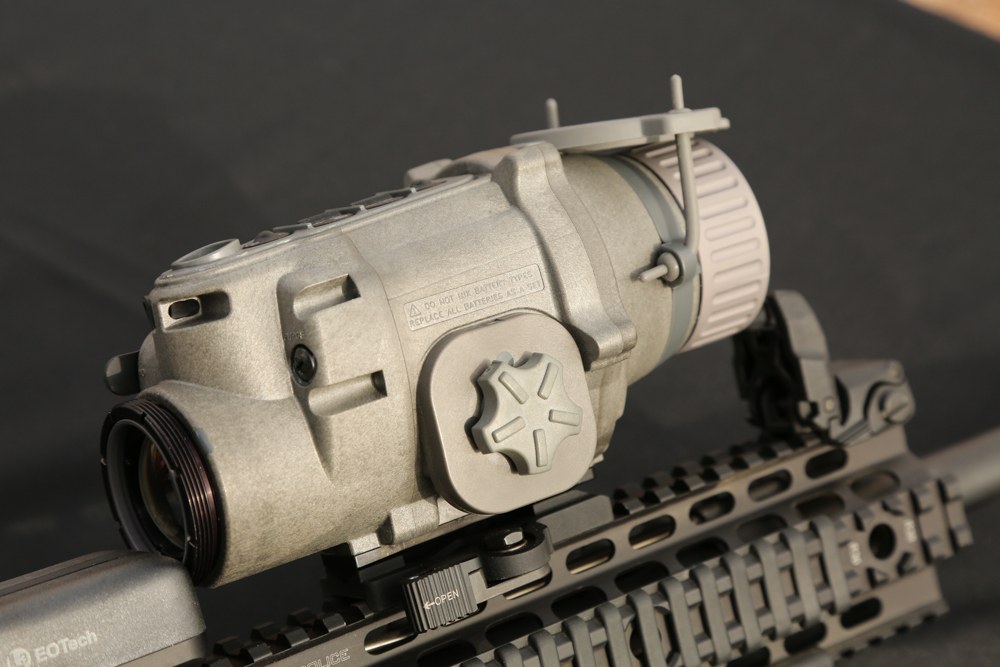
NVG Boosters
You can see more at night with NVG if there is light to see by. The way to do that is with infra-red. NVG is somewhat sensitive to IR, and if you use an IR floodlight or laser, you can boost what you see. Also, if you are in a hunting party for hogs using NVG, if anyone has an IR flood then everyone has one, at least where the flood is pointed.
Heat
Then there are “thermal” sights. These are sensitive to the infra-red spectrum. Now, the NVG gear is, also, but it isn’t sensitive enough to “see” anything but an IR laser. (That’s the green beam, in the green screen, you see in action movies.)
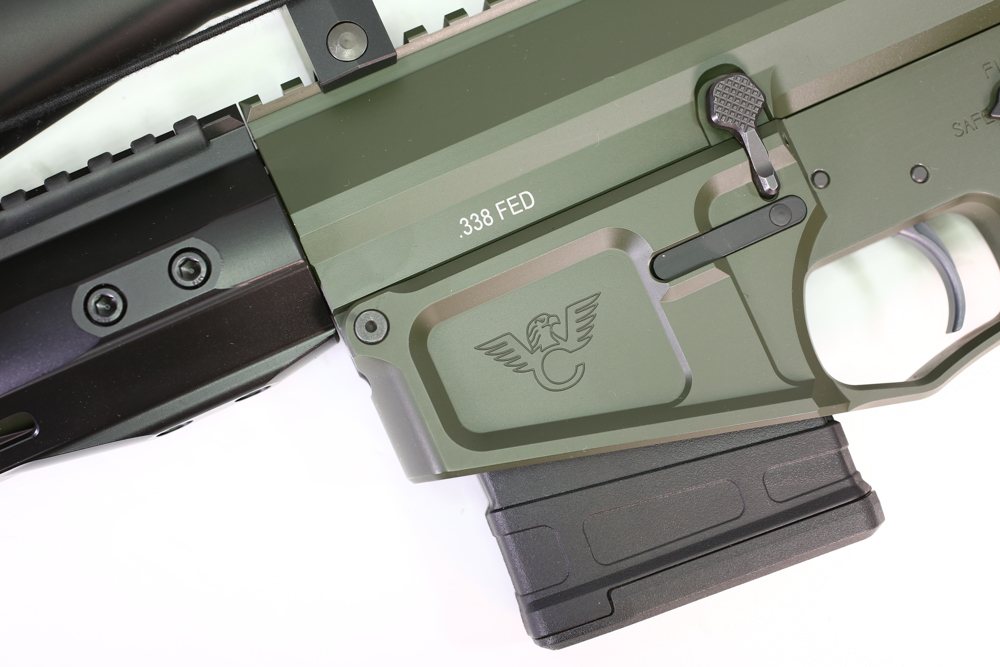
Thermal is the new NVG, and the prices are coming down while the resolution is going up. By seeing the infra-red spectrum, thermal sees where image intensifiers don’t. Even a little bit of a brush screen can hide something from a NVG. But if it is giving off heat, the thermal will see right through the thin screen of brush. It takes a lot to hide thermal.
Thermals, like NVG, come in viewers and aiming optics. Being new, you can take the price of a regular NVG, multiply it by five or six, and you have the price of a similar thermal.
Sound
Suppressors don’t hide the sound of the shot well enough to keep hogs from knowing they’ve been shot at. And they certainly don’t hide the “thump” of the bullet hitting a hog in the group, which alerts the rest, even if the reaction of the one being hit hadn’t so-warned them.
But it can hide the location of the shot well enough that they don’t know which direction to run for safety. A group will scatter, and some may even run towards you, as well as some away and to the side.
If you are going to hunt hogs at night, you’ll need some sort of image improvement and aiming system and a suppressor. Otherwise you’re just wasting your time.
This excerpt is from Gunsmithing the AR-15: Building the Performance AR.

Next Step: Get your FREE Printable Target Pack
Enhance your shooting precision with our 62 MOA Targets, perfect for rifles and handguns. Crafted in collaboration with Storm Tactical for accuracy and versatility.
Subscribe to the Gun Digest email newsletter and get your downloadable target pack sent straight to your inbox. Stay updated with the latest firearms info in the industry.

![Best Concealed Carry Guns In 2025 [Field Tested] Wilson Combat EDC X9S 1](https://gundigest.com/wp-content/uploads/Wilson-Combat-EDC-X9S-1-324x160.jpg)


![Best 9mm Carbine: Affordable PCCs [Tested] Ruger Carbine Shooting](https://gundigest.com/wp-content/uploads/Ruger-Carbine-Shooting-100x70.jpg)
![Best AR-15: Top Options Available Today [Field Tested] Harrington and Richardson PSA XM177E2 feature](https://gundigest.com/wp-content/uploads/Harrington-and-Richardson-PSA-XM177E2-feature-100x70.jpg)
